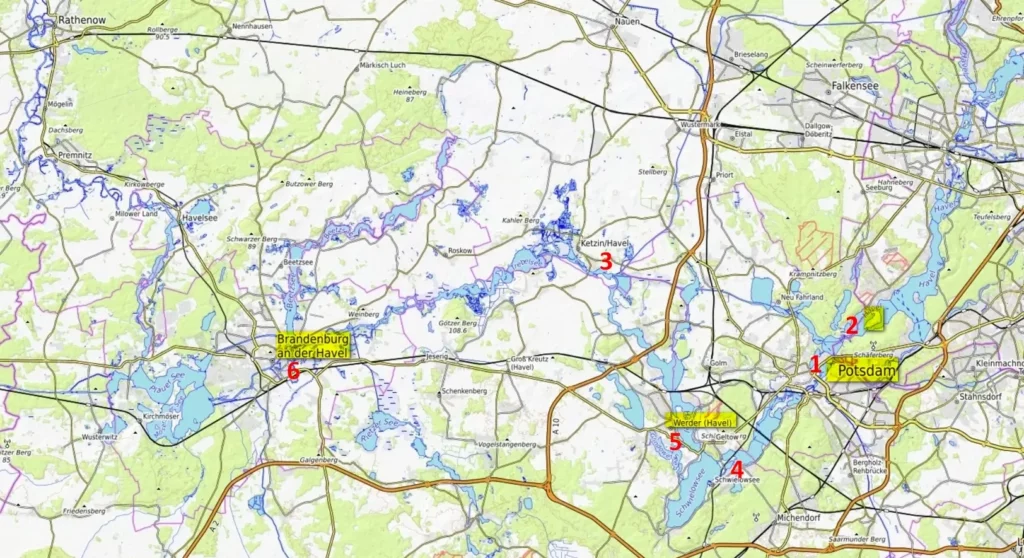Last Updated on 10/05/2023
Potsdam, a satellite of of Berlin that smoothly turns into Berlin itself, is associated primarily with the Sanssouci park and palace. This is a very green city, with huge expanses of water around, there are not one or two palaces in it, although it is not necessary to visit all of them.
Potsdam can be a good base from which to explore Berlin and the surrounding area. It is cheaper to live here than in Berlin, you can rent a good apartment. But you need to settle either not too far from the station, or have access to highways, that is, do not go deeper into the city center.
Next – Sanssouci New Palace and New Garden.
90+ parks and gardens in Germany on the map
Brandenburg What to see. 1
What to see in Brandenburg on the map. Part 2
Cuxhaven. 1. Center
Dresden attractions
Since the reunification of Germany, the complex of gardens and palaces of Brandenburg and Berlin is constantly being restored. For current openings and closings, see the site of the palaces.
How to get to Potsdam park Sanssouci
From Potsdam, you can reach Berlin city center directly in 25 minutes. It is better to go by the regional train (RE), and not the city train (S): although the city train runs more often, it is longer and much less comfortable.
The RE 1 train stops in Berlin at the main tourist stops (zoo, main station (close to the Brandenburg Gate and the Reichstag), Alexanderplatz) and continues on towards Frankfurt an der Oder.
Another way to Berlin goes through the Glienicke Bridge: take a tram to the bridge, then change to a bus. This option is suitable for those who are in no hurry and want to see the palace on Peacock Island and Lake Wannsee.
If you want to park in Potsdam for free and in the immediate vicinity of Sanssouci Park, pay attention to the street that runs along the park below. It was possible to park for free on Geschwister-Scholl-Str. on the sidelines, better closer to Charlottenhof (closer to the Sanssouci Palace). It takes about 10 minutes to walk from this street to the central alley of Sanssouci Park, to Sanssouci Palace – it will depend on where you parked on the street. There were places until 11 o’clock in the morning, then there is no places more.
Public transport
Potsdam is a big city. The distances between the sights are walking, that is, you can get to the parks on foot, but you will get tired, and the parks themselves are exceptionally large. Therefore, if you are coming from Berlin, then buy a day ticket to ABC zones, from other cities – a Brandenburg ticket, and if you are staying in Potsdam itself, it is better to stock up on a day ticket for local transport.
There are several main tourist routes. Bus 695 goes from the train station to the Sanssouci Palace and further along the park to the New Palace.
Bus X15 runs from the train station to the Sanssouci Palace.
Bus X5 goes to the New Palace.
Trams 92, 96 go past the Alexandrowka colony and come quite close to one of the entrances to the New Garden (Neuer Garten), but from this entrance it is still about 20-25 minutes to walk to the Cecilienhof Palace.
You need to spend 15-20 minutes to get to this palace from the Gliniki Bridge, where tram 93 goes from the station.
Another way to travel between Potsdam’s attractions (besides Sanssouci Park), especially in fine weather, is by water taxi. The water taxi stop is located across the square from the station. Taxis run quite often. However, this method will be more expensive.
A little history
Although Potsdam is a fairly old Slavic settlement and was first mentioned in the 10th century, before the 17th century. it remained small and insignificant. At the beginning of the 17th century the electors drew attention to Potsdam and built the first palace there. The great Elector Frederick William decided to establish his second residence here, and from that moment the development of the city began.
In order not to get confused in all these Fredericks (Friedrich) and Williams (Wilhelms), we will write who followed whom and what they built. In the table, only those rulers who were important for Potsdam, I chose only a little from the historical information so that it was clear what kind of person they were.
1. Great Elector Frederick William 1 (1620-1688) – Duke of Prussia from the Hohenzollern dynasty
formed an independent Prussia, invited numerous colonists from Holland and France to the lands empty after a 30-year war
Potsdam is the second seat of the Elector. Edict of Potsdam – Huguenots from France invited
2. Frederick William 1 (1688-1740), King of Prussia, grandson of number 1, “the soldier king”
pursued a policy of strict control and austerity, including in relation to the royal family
turned Potsdam into a garrison city, greatly enlarged its size, built the Dutch Quarter
3. Frederick 2 the Great (1712-1786), King of Prussia, “Old Fritz”, son of number 2
the philosopher king, patron of sciences and art, pursued a policy of enlightened absolutism, strengthened Prussia as a state
Style: rococo, baroque, french garden
Sanssouci (1769),
New Palace, Temple of Friendship, Chinese Tea House (1757),
House of the Dragon (1772) and Belvedere on Mount Klausberg, New Chambers, Picture Gallery (1764),
Brandenburg Gate (1770 г.)
4. Frederick William 2 (1744-1797), King of Prussia, nephew of number 3, grandson of number 2
preferred entertainment, not politics, nevertheless increased the territory due to participation in the partition of Poland
Style: early classicism, romanticism, English landscape park
Marble Palace (1792),
New Garden (1787), palace on the island of Pfauen (1797)
5. Frederick William 3 (1770-1840), King of Prussia, son of number 4
pursued the Restoration policy, introduced strict censorship
Style: classicism
colony Alexandrowka (1827 г.)
6. Frederick William 4 (1795-1861), King of Prussia, son of number 5
“romantic on the throne”, reduced censorship, stopped persecution of other denominations, patronized the arts
Style: stylization of the Italian Renaissance
Charlottenhof Palace (1828),
Friedenskirche Church, Orangery Palace (1864),
Roman Baths (1840), Belvedere on Pfingstberg Mountain, renovation Sanssouci
7. William 1 (1797-1888), king of Prussia and later the first emperor of a unified Germany, son of number 5 and brother of number 6
appointed Prime Minister Otto von Bismarck, who pursued real policy
Style: neo gothic
palace and park Babelsberg (1831-1849 гг.)
8. William 2 (1859-1941), emperor of Germany, grandson of number 7
very strong-willed man, loved the army and especially the navy, was one of those who unleashed the First World War, as a result of which in 1918 he was forced to renounce the throne and emigrate to Holland
built for his son Cecilienhof (1912)
Sanssouci park map
If there is a desire to visit the Sanssouci Palace, then it is better to start with it, having arrived there by bus, since the excursions are held on time and there are too many who wish, and then, while waiting for your time, return to the entrance to the park. If you want to see the palaces only from the outside, then it is better to start from the entrance to the main alley.
To take pictures in palaces and pavilions, you need to buy a single daytime permit. The piece of paper is hung on the camera or hand.
In the information centers behind the Sanssouci Palace and near the New Palace, you can buy a plan of the park for 2.50 euros, it will not be superfluous. This same plan is sometimes sold by special people at the entrance to the park. In New Garden I also saw a vending machine for plans, probably the same can be found in Sanssouci Park.
The baroque park was laid out after the construction of the palace in the middle of the 18th century. The Prussian rulers of that century were distinguished by their diligence and economy. Therefore, the idea of combining the utilitarian principle and the entertaining one, which is the basis for the park’s layout, is not surprising. Numerous fruit trees have been planted, a vegetable garden has been laid out, and the palace is hiding behind grape terraces.
Of course, the park has undergone changes. After Frederick 2, Frederick William 4 lived in the palace of Sanssouci, then there were world wars and the division of Germany, which did not affect the appearance of the Potsdam gardens in the best way. And Sanssouci Park could not reach us in its original form. The baroque French garden quickly turns into landscape.
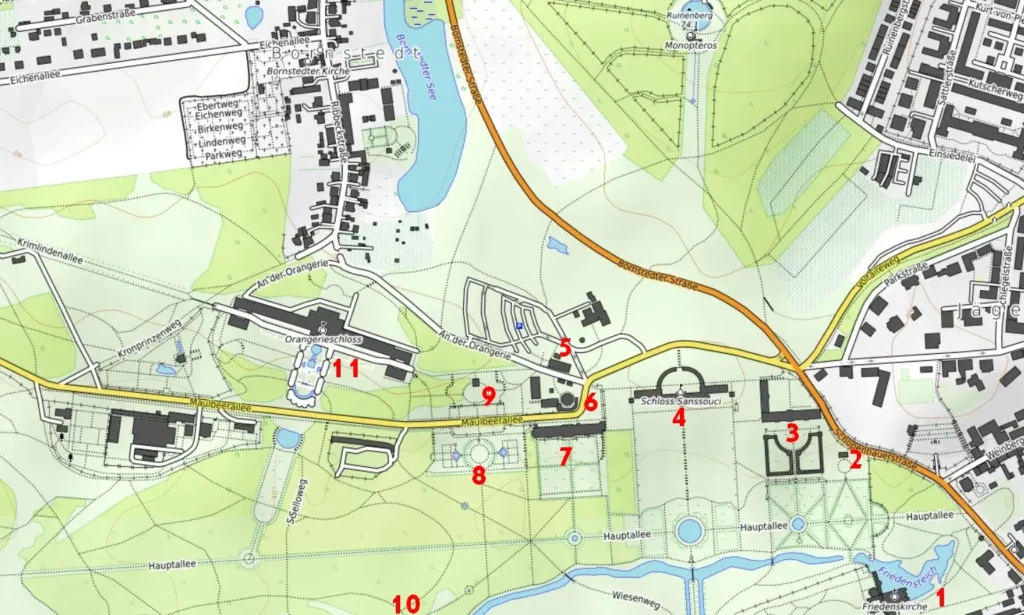
What to see in park Sanssouci
Let’s start our walk from the park entrance to the main alley. The length of the alley from the obelisk in front of the entrance to the New Palace is 2.5 km. With a lack of time, it is quite possible to be satisfied with points 1-11. They will take about 3-4 hours depending on how closely you examine them.
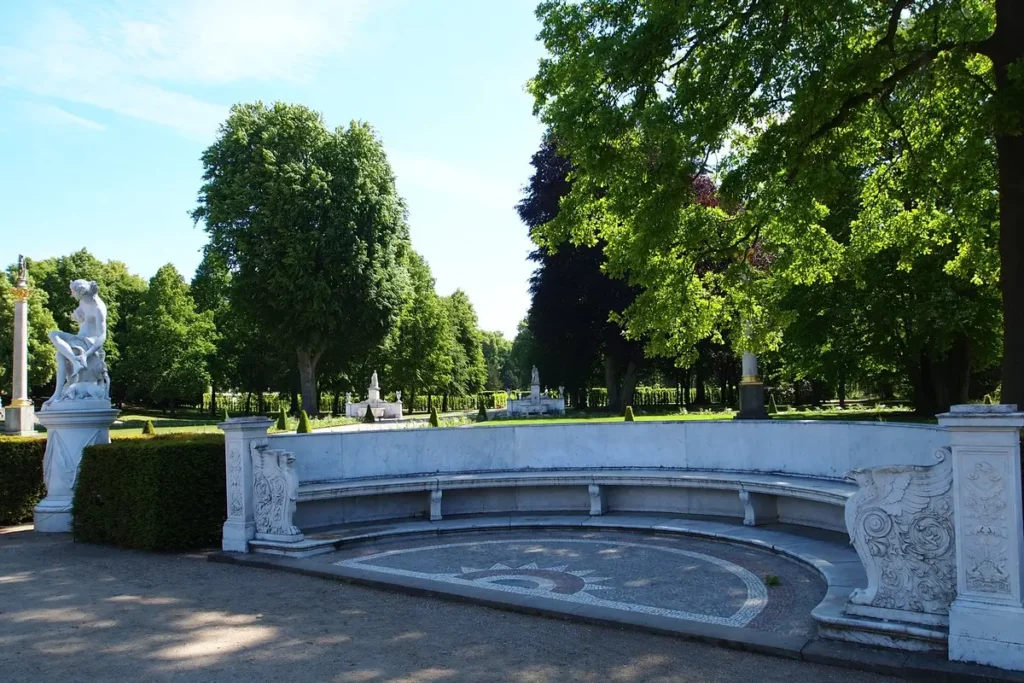
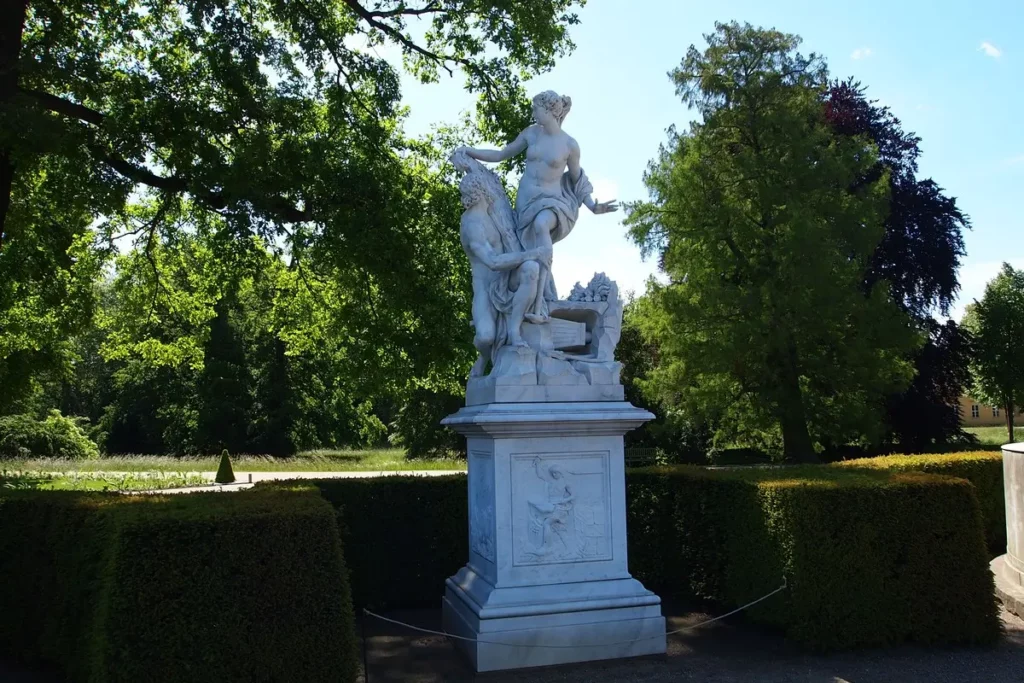
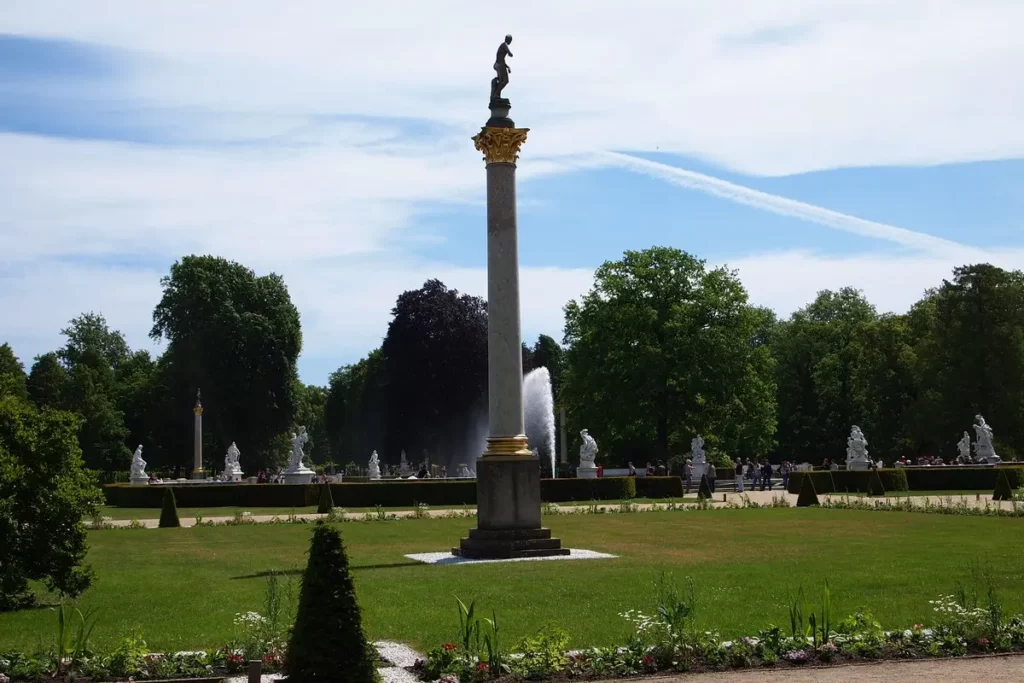

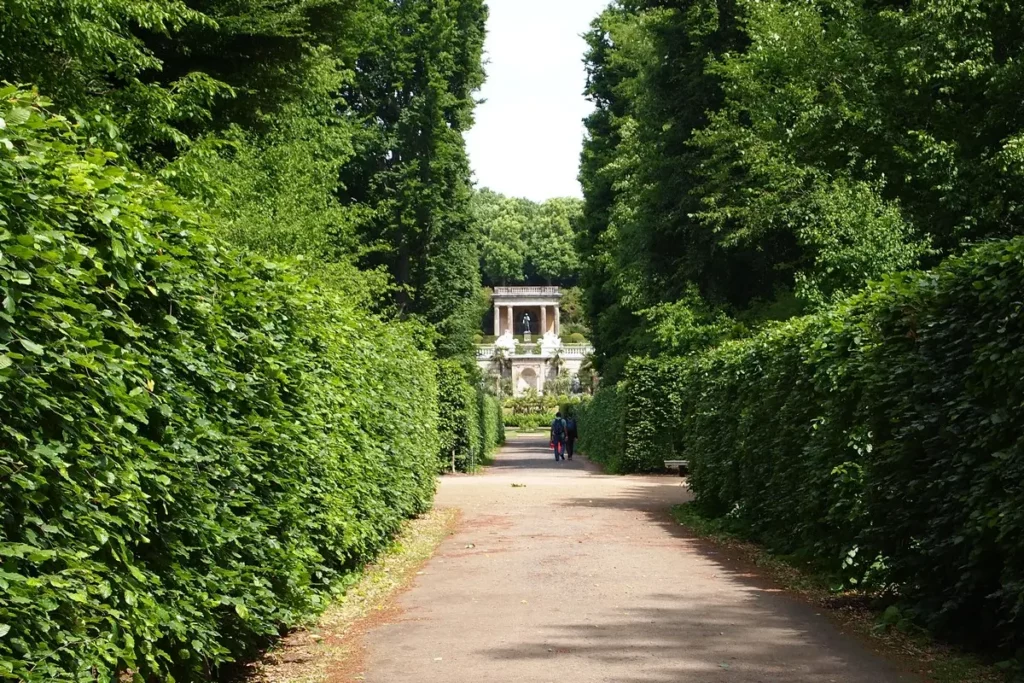
1. At the entrance to the left is the Friedenskirche (1854), modeled on Italian churches and serving as the burial vault of Frederick William 4, Frederick William 1, Frederick 3 and other members of the imperial family.
2. Not far from the entrance to the right is hidden the grotto of Neptune (1757). It’s easy to miss, especially if you don’t have a plan with you.
3. Picture gallery
On a hill above the grotto – the Picture Gallery (Bildergalerie, 1764) – one of two symmetrical buildings built to the right and left of the Sanssouci Palace under Frederick II the Great. The gallery displays paintings from the collection of Frederick the Great. Some of the paintings settled in private collections, in their place, empty frames were left on the walls.
The collection includes mainly works by artists of the Baroque and Rococo eras, including very famous ones: Rubens, Caravaggio, van Dyck, Watteau.
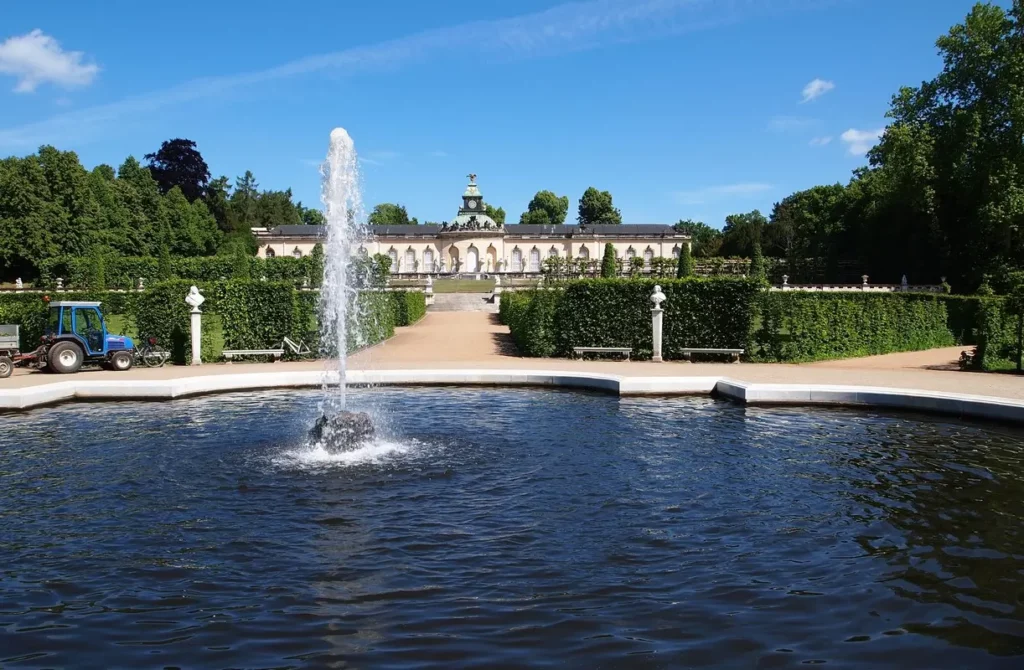
The Sanssouci Palace and the Baroque park at it inevitably make you remember Versailles and call it another copy, this time Prussian.
However, the idea that formed the layout of both the palace and the garden is exactly the opposite of the idea of Versailles. There is a victory of man over nature, the desire to subjugate it, to trim it, to demonstrate the luxury and power of the king, here is the unity of man and nature, a private royal palace, in which only a few were allowed to visit.
4. Sanssouci Palace
From the central fountain, which, by the way, only started working in the middle of the 19th century, when a steam pumping station in the form of a mosque was built, the palace is barely visible behind a series of stairs and grape terraces.
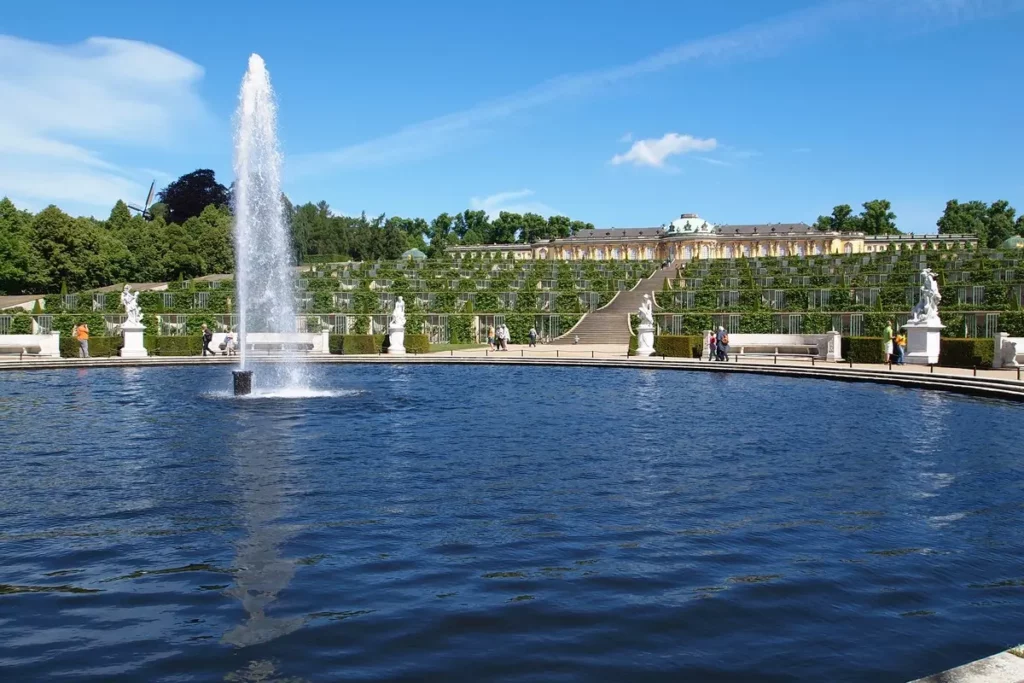
The inscription on the palace “sans souci …” meaning “carefree” in French, in the understanding of the philosopher king, meant rather that he intends to live and die here without the fuss of this world, and not in continuous entertainment.
Guided tours of the palace are timed. To visit several palaces and pavilions, you can buy and print your Sanssouci+ ticket online. For an additional 2 euros, you can order a convenient visit time. The same family ticket can be bought at the box office. Separate tickets to all palaces and pavilions are bought there.
There are only about a dozen rooms in the palace. They are well preserved, because the palace was not destroyed during the war. Several rooms were guest rooms, six more belonged to the royal apartments. One of the rooms is named after Voltaire, as he lived here when he was visiting Frederick.
In addition to the royal apartments themselves, here you can separately visit the palace kitchen of the 19th century and the so-called female wing (Damenflugel). The women’s wing appeared under Frederick William 4, who did not touch the royal apartments out of respect for Frederick the Great, but remade the side wing in order to accommodate maids of honor and courtiers.
Ruinenberg Hill
The photo shows the view from the colonnade of the artificial ruins on Ruinenberg. On the hill, according to Frederick’s plan, there was to be a water reservoir supplying water to the fountains.
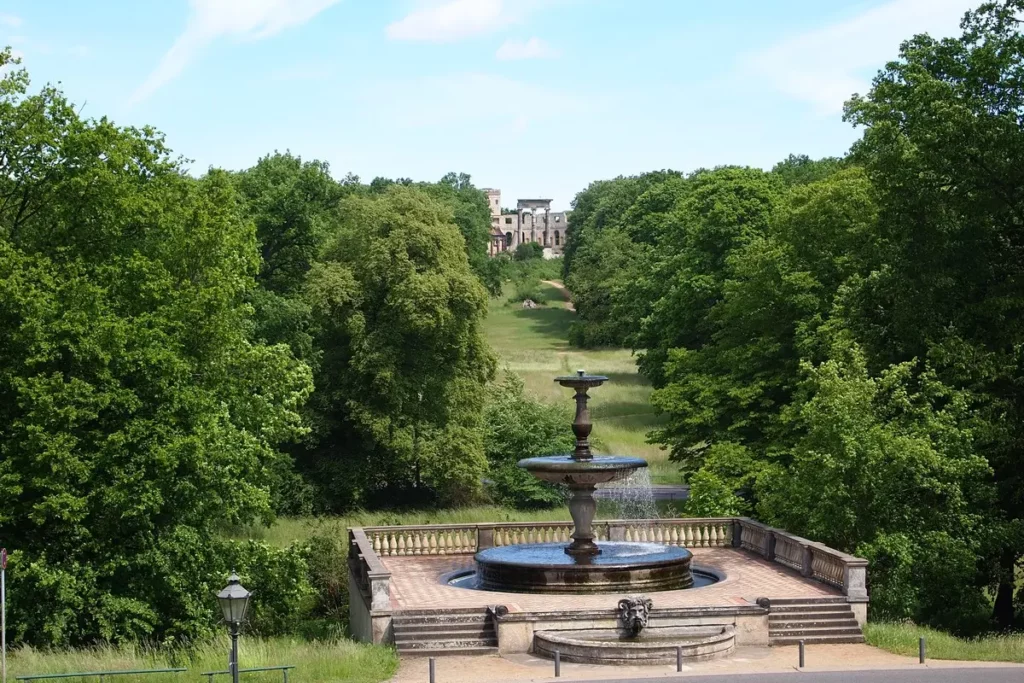
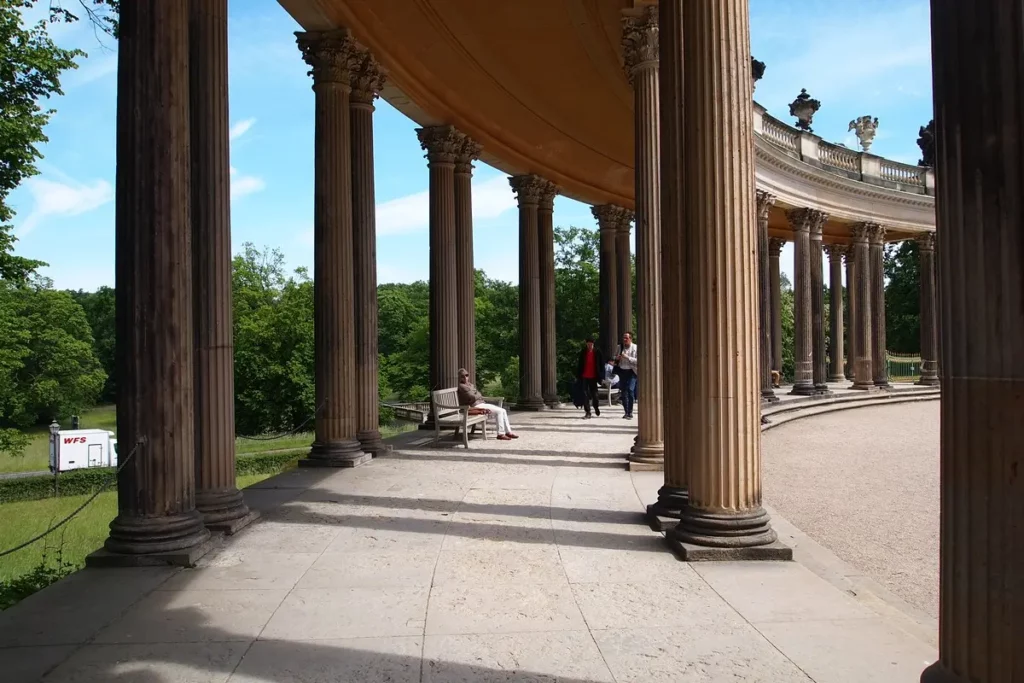
Several mills had to lift the water into the tank. They were never built, since the project turned out to be too expensive and the masters could not implement it correctly. Therefore, the fountain was launched only once – thanks to the melted water. After the war, the park was used by the Soviet army for training for a long time. Therefore, it fell into desolation and was restored at the end of the 20th century.
5. Information office.
6. Historic mill
Although it is considered historical, it actually burned down during the battle at the end of the war and is a new building.
The original mill was built in 1737-1739. to support the greatly increased garrison and population. Frederick the Great soon decided to build a palace, and the miller complained that his mill would not receive enough wind. This miller received compensation as a result, sold the mill and built another in another place. His successor was also unable to profit from the mill, and it eventually burned down.
This story has been transformed into a legend. Allegedly, the king wanted to remove the mill, as it interfered with his work with its noise, and the miller said that a fair royal court would not allow this. In fact, Frederick believed that the mill was an integral part of the rural landscape.
The new mill was built at the end of the 18th century, but it also could not work successfully. During the reign of Frederick William 4, it came into the possession of the emperor. It was this mill that was restored at the end of the 20th century. The mill houses a museum, but it also works.
7. New chambers
New chambers (Neue Kammern, 1775) complete the ensemble. Initially, this place was a greenhouse for winter storage of heat-loving plants. New chambers served to accommodate guests.

8, 9. Nice little gardens with statues and fountains – Sicilian and North.

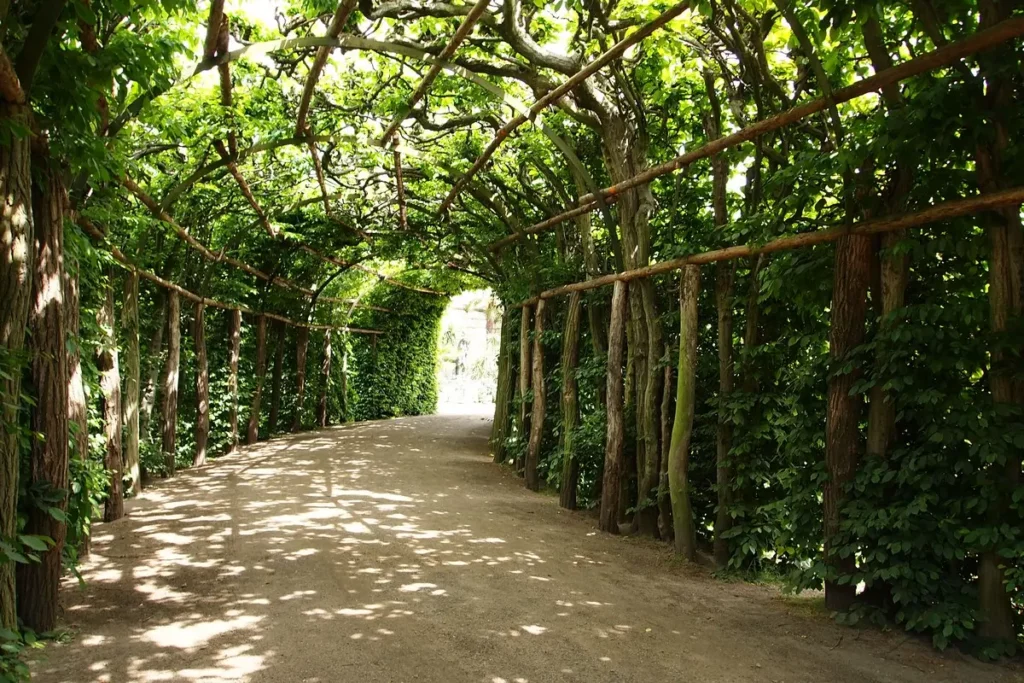
Follow me
10. The Chinese teahouse (Chinesisches Haus, 1764) displays a collection of porcelain.
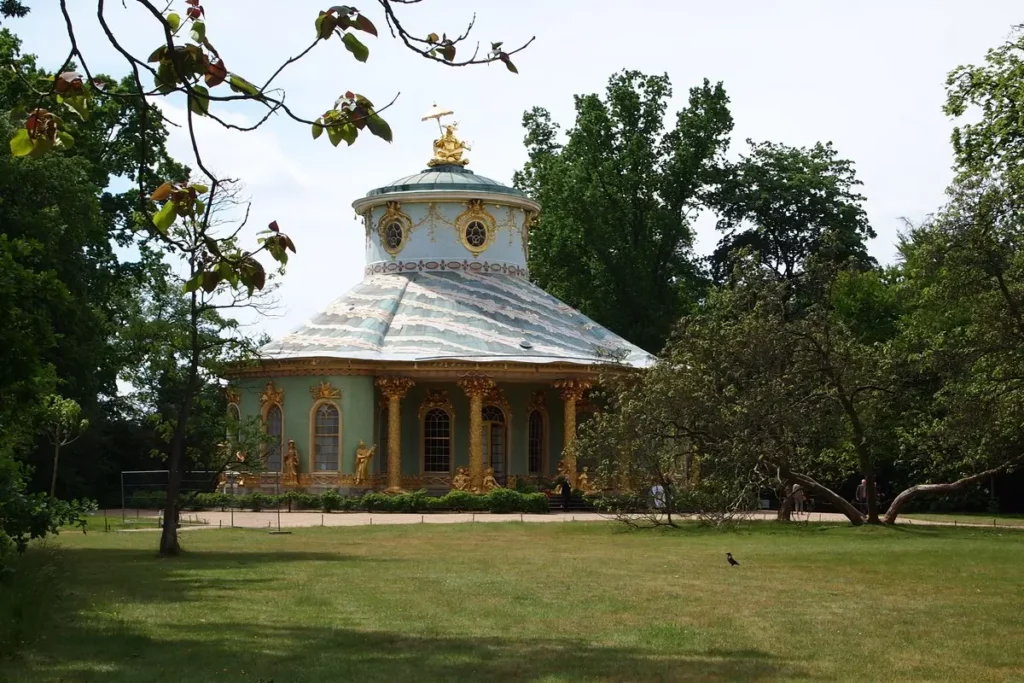
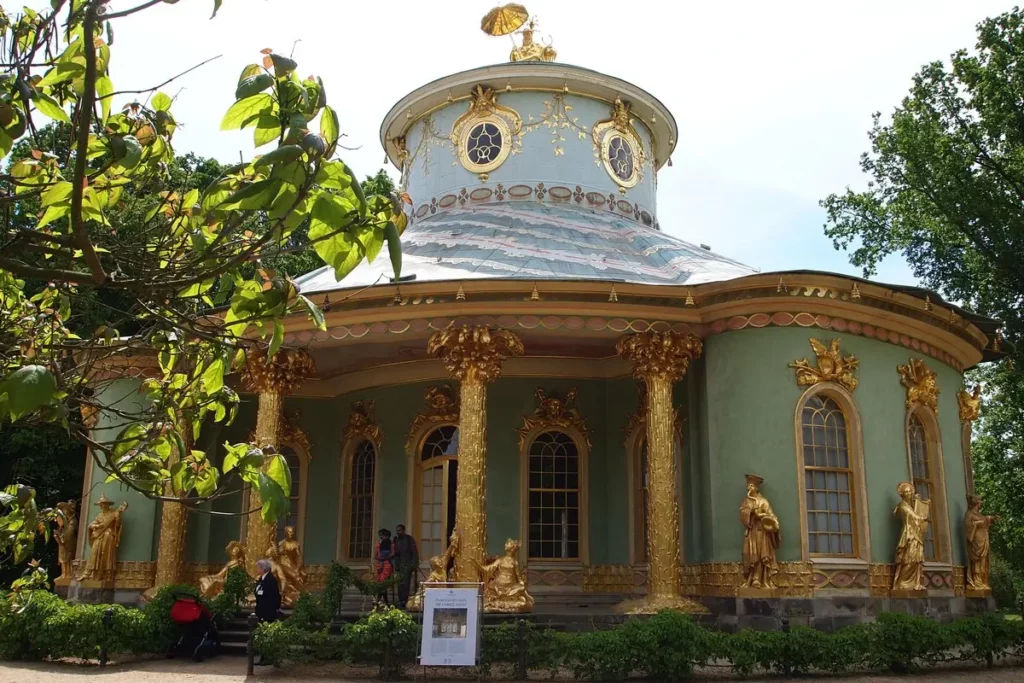
11. Greenhouse palace
The Orangerieschloss (1864) was built at the request of Frederick William 4 in the Italian Renaissance style. It is located across the street along, where the bus 695 goes, from Sanssouci Park.
One hall of the palace was used for the winter keeping of heat-loving plants. Another, the Raphael Hall, contains numerous copies of the artist’s work. The rest of the rooms were used to accommodate the emperor’s guests. In particular, the widow of Nicholas 1, Alexandra Feodorovna (geb. Charlotte of Prussia), stayed there.
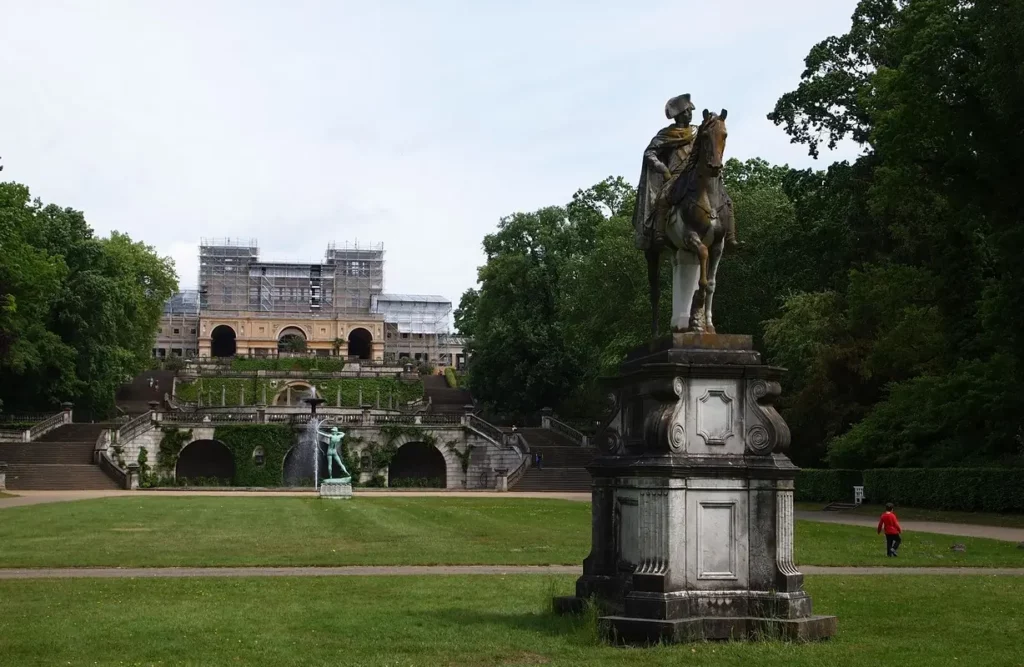
Next – Sanssouci Park Part 2, New Garten.
What to see in Brandenburg on the map. Part 2
90+ parks and gardens in Germany on the map
Brandenburg What to see. 1
Do you enjoy the site without cookies? This means that I work for you at my own expense.
Perhaps you would like to support my work here.
Or change your cookie settings here. I don’t use personalized ads


